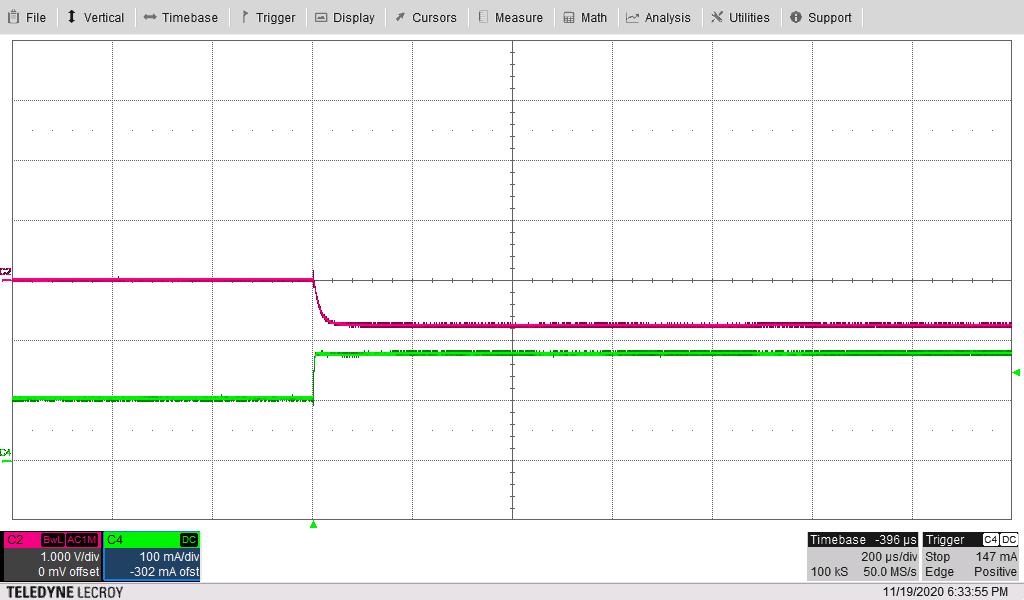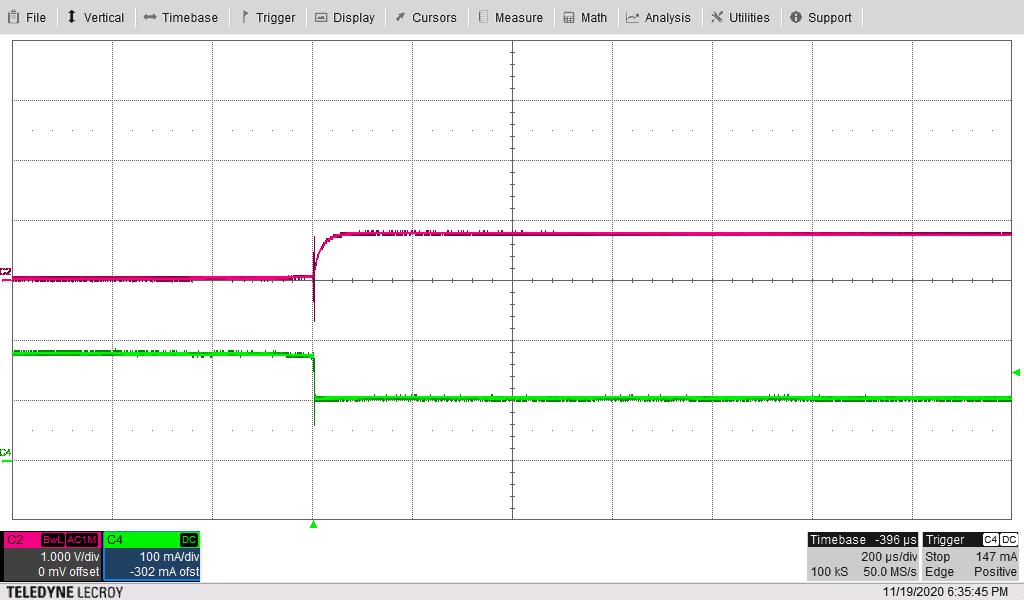TIDT226 April 2021
4.4 Load Transients
The total rectified secondary output voltage (AC coupled) is shown in Red in the following waveform for a load step (Green) from 100 mA to 175 mA with the input voltage at 24 V. The load current is sourced from the 20 V directly to the –4 V with no COM connection.

The total rectified secondary output voltage (AC coupled) is shown in Red in the following waveform for a load step (Green) from 175 mA to 100 mA with the input voltage at 24 V. The load current is sourced from the 20 V directly to the –4 V with no COM connection.
